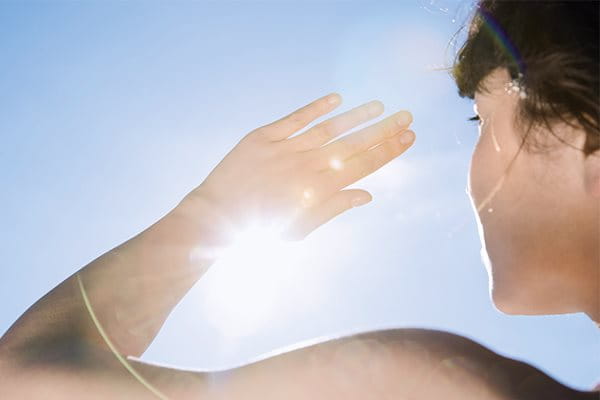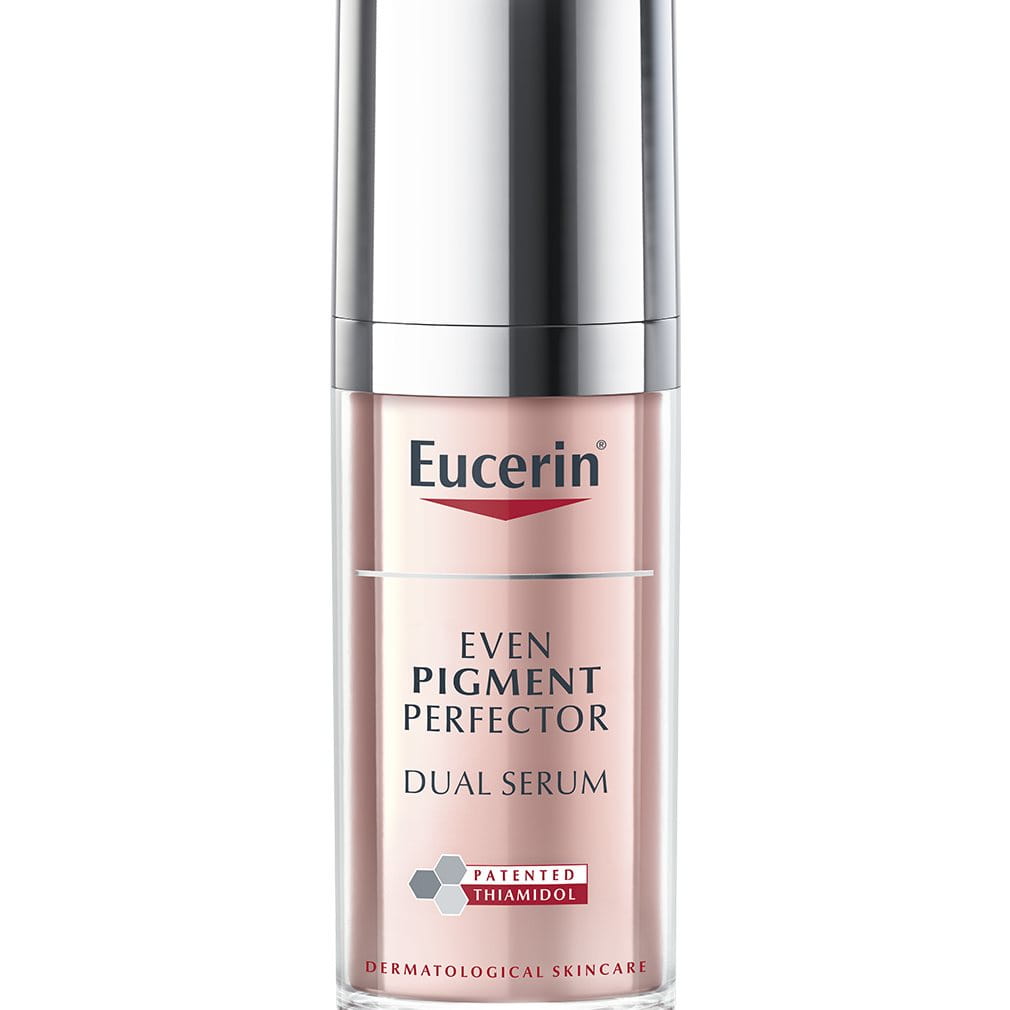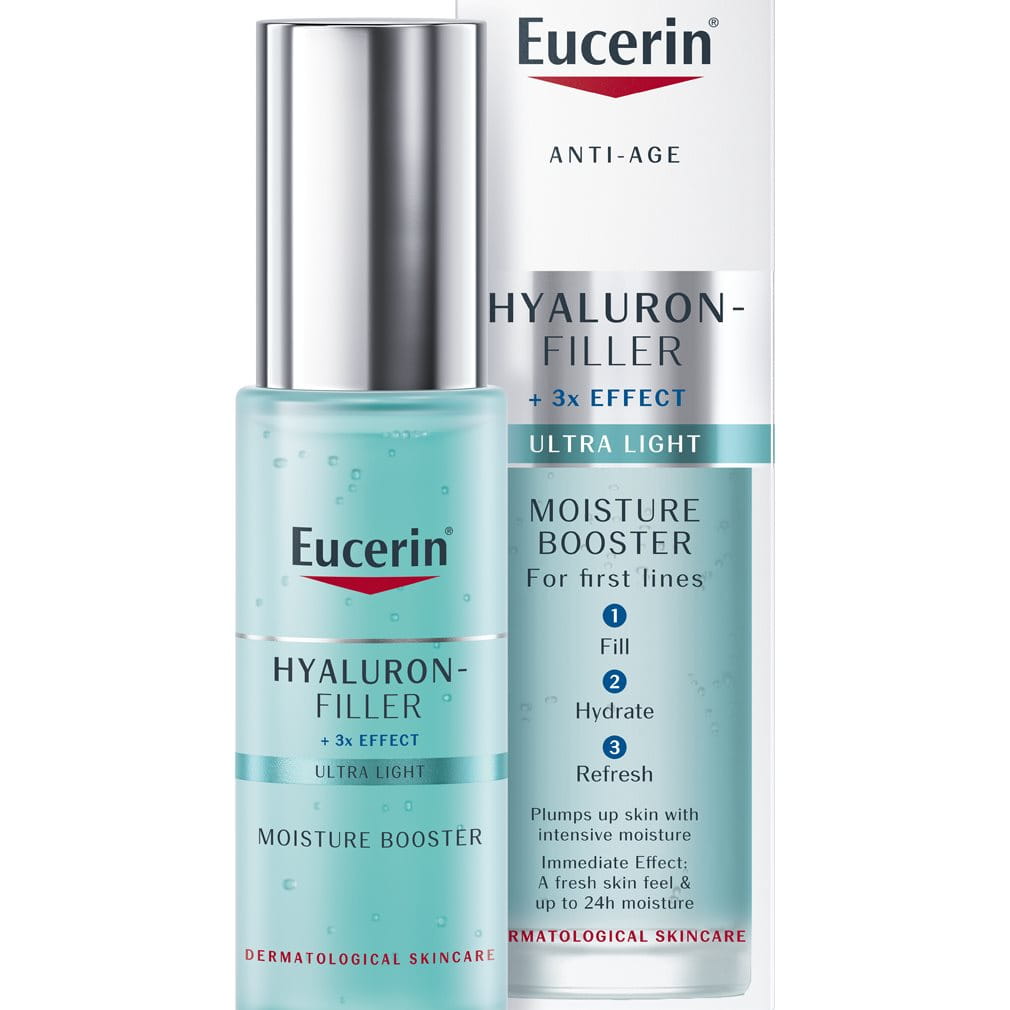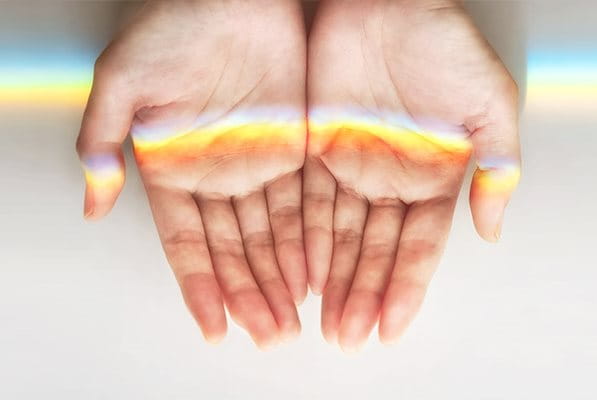
Ultraviolet light is invisible to the human eye and comes in three forms: ultraviolet A (UVA), ultraviolet B (UVB) and ultraviolet C (UVC).
UV light has a shorter wavelength than visible light. UVC rays have the shortest wavelength (of between 100 and 290nm). They are blocked by the earth’s atmosphere and so don’t reach the skin. UVA and UVB rays have a wavelength of between 280nm and 400nm, though UVA has a longer wavelength than UVB. Together they make up about 5% of the sun’s rays.
UVA rays are less intense than UVB, but there are 30 to 50 times more of them. They are also present constantly, with relatively equal intensity, during all daylight hours throughout the year. UVB rays, however, fluctuate throughout the day and are at their strongest at noon. Both pass virtually unhindered through cloud and smog.
Sunlight can be good for us, but too much sun causes skin damage. Sunburn, photoaging (premature skin agingcaused by the sun), hyperpigmentation and sun allergies are examples of visible skin damage, but the effects of sun exposure can go even deeper, causing DNA damage at a cellular level.
UV rays (both UVA and UVB) are the main cause of sun-induced skin damage but high-energy visible (HEVIS) light can cause further stress to skin. The rays affect skin in different ways:
UVA rays penetrate the deeper layers of skin (the dermis). They stimulate the production of free radicals in the skin which cause oxidative stress and can lead to indirect DNA damage: (where the free radicals modify cellular DNA over time). UVA rays are most commonly associated with:
- Photoaging (premature skin aging caused by the sun):
- Sun allergies such as PLE (UVB rays can also provoke allergies, but to a lesser degree)
- Hyperpigmentation such as sun spots (also known as age spots)
Studies have shown that the rate of serotonin production in the brain is directly affected by the amount of sunlight the body is exposed to that day. Serotonin levels are higher on bright days than on overcast or cloudy days. Serotonin is a powerful brain chemical that controls mood and is associated with happy feelings.
Similarly, people who have reduced exposure to sunlight, usually in the winter months in the northern hemisphere, can experience symptoms of depression, difficulty concentrating, low energy or fatigue and excessive sleeping. Together these symptoms are classified as Seasonal Affective Disorder (SAD).
Skin aging is, of course, an entirely natural process, but when skin ages prematurely it may start to sag and develop wrinkles before its time. Up to 90% of premature skin aging is thought to be caused by the sun1 and is known as photoaging. The direct DNA damage caused by UVB rays plays a role in photoaging but the main cause is the oxidative stress triggered by UVA rays and HEVIS light. The free radicals induced not only stress skin cells they also break down collagen and elastin which are important for smooth, plumped skin: wrinkles form, skin loses volume and hyperpigmentation issues such as sun spots (also known as age spots) appear prematurely. You can read more in Photoaging: what causes it and how can I prevent it ?
- 1 Ramos-e-Silva et al., ‘Anti-aging cosmetics: Facts and controversies’. Clin Dermatol. 2013 Nov-Dec; 31(6): 750-8.
Hyperpigmentation is caused by an overproduction of melanin – the natural pigment that gives skin its color. This overproduction can be triggered by a variety of factors but the most common is overexposure to the sun. UVA, UVB and HEVIS light rays are all connected with pigmentation issues and may contribute to conditions such as age spots (also known as sun spots) and melasma . Read more in The Sun and Hyperpigmentation.
Different skins react in different ways to the sun:
- Tone: Pale skin can be more prone to sunburn while darker skin is often more susceptible to hyperpigmentation.
- Age: Children’s skin and mature skin is thinner and more fragile than skin at other ages and is particular sensitive to sun damage.
- Location: Some areas of skin – such as the face, neck, décolleté, arms and hands – are more exposed to sun than other parts of the body
- Type: Oily and acne prone skin has different sun protection needs to dry skin
- Condition: The sun can trigger sun allergies, and those taking certain medications, as well as people who have recently had a chemical peel or laser treatment, may find that their skin is more sensitive to the sun.
- Advanced Spectral Technology: Broadband and photostable UVA/UVB filters 2 for superior UV protection combined with Licochalcone A to neutralize free radicals induced by UV and HEVIS light
- Additional DNA protection: Glycyrrhetinic Acid supports skin’s own DNA repair mechanism to further protect skin at a cellular level
- A range of face and body products tailored to your skin type and condition: with textures that suit, and ingredients that address, your primary skin concern.
Find out more about the Eucerin sun protection range here.










